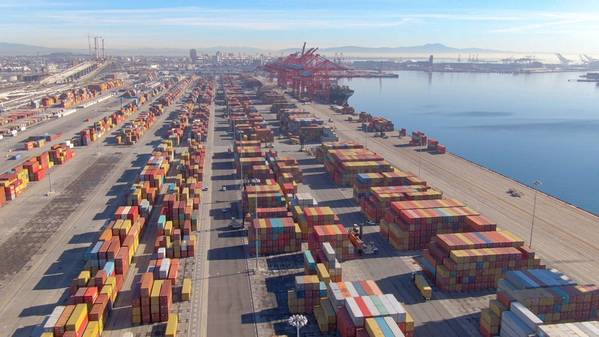
Monthly inbound cargo volume at major container ports in the US is continuing to rise despite a variety of supply chain challenges, according to the Global Port Tracker report released by the National Retail Federation and Hackett Associates.
“Lulls between supply chain challenges seldom last long, and importers are currently looking at issues including high shipping rates, unresolved port labor negotiations and continuing capacity and congestion issues from the ongoing disruptions in the Red Sea,” NRF Vice President for Supply Chain and Customs Policy Jonathan Gold said. “Despite all of that, we’re experiencing the strongest surge in volume we’ve seen in two years, and that’s a good sign for what retailers expect in sales.”
Hackett Associates Founder Ben Hackett said the latest numbers come as attacks on shipping in the Red Sea earlier this year have had an impact beyond earlier expectations because of lack of sufficient capacity to make up for longer voyages to avoid the region. Political support for higher and broader tariffs on imported goods is expanding. And worries over lack of a new contract with East Coast/Gulf Coast dockworkers is shifting some cargo to West Coast ports. All of those issues drive up prices for shipping and, in turn, consumers.
“The risks to global trade growth continue to increase,” Hackett said. “We are in a volatile situation with multiple pressures on the movement of goods, underpinned by continued inflationary pressures.”
U.S. ports covered by Global Port Tracker handled 2.08 million TEU in May, the latest month for which final numbers are available. That was up 3% from April and up 7.5% year over year, and was the highest number since 2.26 million TEU in August 2022. (The total includes estimates for the ports of New York and New Jersey, which have not reported TEU counts for May.)
Ports have not yet reported June’s numbers, but Global Port Tracker projected that volume rose to 2.1 million TEU, up 14.5% year over year. July is forecast at 2.21 million TEU, up 15.5% year over year; August at 2.22 million TEU, up 13.5%; September at 2.1 million TEU, up 3.5%; October at 2.05 million TEU, down 0.5%, and November at 1.96 million TEU, up 3.5%.
The first half of 2024 is expected to total 12.04 million TEU, up 14.4% from the same period last year. Imports during 2023 totaled 22.3 million TEU, down 12.8% from 2022.
Global Port Tracker, which is produced for NRF by Hackett Associates, provides historical data and forecasts for the U.S. ports of Los Angeles/Long Beach, Oakland, Seattle and Tacoma on the West Coast; New York/New Jersey, Port of Virginia, Charleston, Savannah, Port Everglades, Miami and Jacksonville on the East Coast, and Houston on the Gulf Coast.



